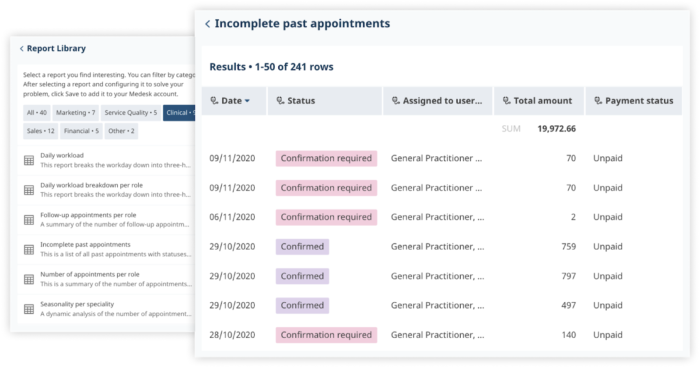The first thing that comes to mind when we hear about medical practices and doctors working there, especially in the light of recent events, is that they are heroes. And rightfully so. However, a practice is still a business, and like any business it has to be managed properly in order to stay afloat.
With coronavirus restrictions slowly winding down, more patients are coming back for regular check-ups and elective surgeries. Still, opening hours are limited, and necessary breaks between patient visits force fewer appointments. As such, it is crucial that medical practice management is optimised for both clinical and admin teams.
A proven way to manage a practice is to implement key performance indicators (KPIs). These are metrics designed to measure performance. They can cover an organisation as a whole, a department, a project, or individuals in specific teams. Depending on the number of staff and how busy your practice gets, the interval at which you examine KPIs can range from a week to a quarter, with a one-month period being the most common choice.
1. Number of people not booking follow-up appointments / cancellation ratio
Some patients just don’t book follow-up visits, or they book but never show up. If you see that the number of no-shows is getting higher, it might signal that patients are dissatisfied with their visits or don’t see the value in coming back for a second appointment. Medesk helps you to track this number with their bespoke Analytics module and dig into the reasons. If you can address this issue quickly and find the root cause, preventing you from getting a bad reputation and minimising financial loss to your practice.

2. Patient visit average
Are your patients coming back time and time again? Do they trust you with different aspects of their healthcare? The ‘patient visit average’ KPI will tell you just that. Naturally, you want your patients to come to you with any health-related query. It’s important to remember with this KPI, that while you would want to see more return visits, each time your patients leave your clinic, they need to feel like they got the most out of the appointment and were not pressured into additional services. In other words, your patients have to want to come back. Medesk helps you to demonstrate value to patients with bespoke appointment confirmations and reminders that correspond to the exact situation at hand.
3. New patient number to total patients number ratio
New patients are always welcome. Especially nowadays, when lots of people are choosing to wait out the pandemic and aren’t in a rush to come to your practice. New patients can help to pack doctors’ schedules and boost your revenue, so it is an important metric to keep an eye on.
4. Cost of acquiring a new patient
While attracting interested people and turning them into patients is an effective way to maintain and grow your practice, the way you do it needs to make financial sense. The Analytics module of the Medesk clinic management software platform displays information on the costs involved, and average bill per patient. If most of the revenue generated by new patients is eaten up by the cost of bringing them in, you might be better off focusing on your existing client base.
5. Average treatment charge
Sometimes less is more. If your doctors are working non-stop but most of their visits generate less than you need to maintain the work of the practice and pay wages, then you need to make changes. Keeping track of the average bill that patients pay per visit or at the end of their treatment and checking that against your overheads will help you monitor your business’ financial health.
The key performance indicators outlined here will give you a great start towards transforming your medical practice and taking it to the next level. Of course, each business is different, so some KPIs might be more important for you than others. In fact, we encourage you to evaluate your practice performance and ask yourself: What are the main goals for me now? How can I achieve those goals? Then, based on your answers, you might have a completely different set of metrics in mind. Whatever your goals, the Medesk platform supports you by giving you the evidence you need to make the right decisions for your clinic.
Please remember that the adjustment process will take time for your team to adapt to. As you start implementing the numerical metrics into your day-to-day medical practice management, be prepared to share your reasoning with the team multiple times, listen to and address their concerns, and help them feel comfortable with the changes you have made. No one really enjoys being monitored and evaluated, but with a little bit of empathy and patience, you will be able to integrate the necessary KPIs into your clinic management approach and see the results and benefits that these improvements bring.
Find a Home-Based Business to Start-Up >>> Hundreds of Business Listings.

















































